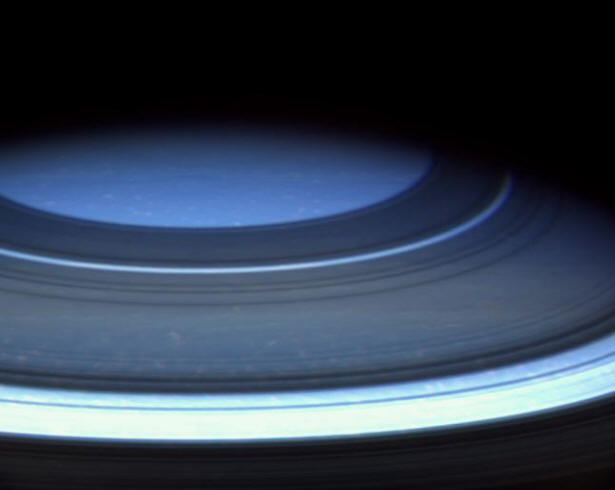Once
again Electric Universe theorists
predicted "mysterious" heat
signatures from Saturn’s poles.In a
recent press release, NASA scientists have admitted
their surprise at finding a hot north pole on Saturn.
Although the northern latitudes of Saturn have been hidden
from the sun since 1995 and summer is just beginning, the
temperatures are equivalent to those radiated from the south
pole. According to Glenn Orton, one of two scientists
monitoring the
infrared spectrometer onboard the Cassini spacecraft:
"We had
speculated that the south pole hot spot was connected to the
southern, sunlit conditions. Since the north pole has been
deprived of sunlight since the arrival of winter in 1995, we
didn't expect to find a similar feature there."
Cassini
mission specialists have speculated that the glow from
Saturn’s north pole appears to be caused by convection
currents carrying heat from warmer southern climes. As Leigh
Fletcher, planetary scientist from Oxford University, said:
“The hot
spots are the result of air moving polewards, being
compressed and heated up as it descends over the poles into
the depths of Saturn. The driving forces behind the motion,
and indeed the global motion of Saturn's atmosphere, still
need to be understood."
Previous
Thunderbolts Picture of the Day articles demonstrated that
Saturn’s
south pole is hotter than can be explained by the
relatively dim sunlight that it receives. Because the
mechanical view of the anomalies in the south fails to
explain the increased temperature there,
Electric Universe proponents suggest that
another source for the energy input must be considered
and that is electricity.
One of the
most bizarre configurations discovered on Saturn is the
hexagon that dominates its north pole. The formation was
originally seen by cameras onboard the twin
Voyager spacecraft that flew by Saturn in November 1980
and then again in August 1981. NASA researchers continue to
refer to the structure as “unexplained”, since the
convective interpretations of Saturnian weather do not
include mechanisms by which clouds can organize themselves
into polygonal shapes.
For many years
researchers studying the issue have known that beams of
electricity flowing through plasma produce a central column
surrounded by concentric cylinders. The cylindrical current
filaments exhibit long-range attraction and short-range
repulsion braiding that result in evenly spaced vortices
surrounding the column. As the filaments rotate around one
another, a preferred hexagonal cross-section forms within
the innermost column.
Hexagonal craters can be seen etched into the surfaces
of
planets and
moons. Weather patterns, such as hurricanes on Earth,
also exhibit
hexagonal “eyes” that defy conventional explanation.







